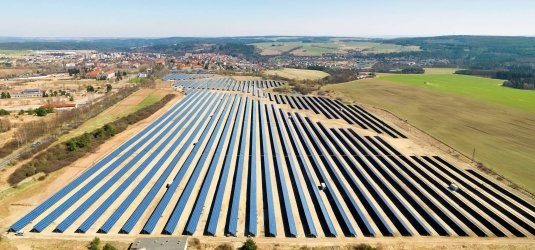The Energy Watch Group has again called out the International Energy Agency for what it says is a “heavy underestimation” of the growth of solar and wind in its latest report.

Amid great fanfare came the International Energy Agency’s (IEA) mid-term renewable forecast this week, hailed as a righting of previous wrongs and an admittance on behalf of the IEA that it had previously been too conservative in its assessment of solar and wind’s global progress.
The report found that last year saw 153 GW of new renewable capacity installed, while the headline figure picked up by many leading media outlets was that 500,000 solar panels were fitted every single day in 2015.
However, the Energy Watch Group (EWG) – a long-term critic of the IEA’s calculations – has reported that the IEA has once again heavily underestimated the growth of wind and solar PV.
Despite a 13% increase in the IEA’s mid-term projections, the EWG’s analysis argues that these new calculations still suggest that wind and solar installations will peak in 2015 and 2016 respectively, with the five years between now and 2021 likely to see a slowing of the growth seen these past two years.
EWG chairman Christian Breyer calls these projections misleading, and remarked that the IEA is “playing a dangerous game” in relying on assumptions that err on the side of conservatism.
Rather, the EWG analysis shows, solar growth between now and 2021 is likely to far exceed the projections laid out in the IEA report. As an example, India’s plan to install 90 GW of additional PV capacity to 2022 is off-handedly dismissed, with the IEA forecasting total PV growth in the whole of Asia Pacific will amount to 85 GW by 2021.
“We would like to know why the IEA assumes that this policy target in India will not be achieved,” mused Breyer. “We have found no valid arguments in the report.”
There are accusations, too, of erroneous cost assumptions in the report, with EWG claiming that the IEA has overestimated the price of solar PV in major markets for 2016 by at least 20%. For example, PV power plants in India are currently averaging a cost of around $750/kWp, argues the EWG, whereas the IEA report says that “PV prices in leading markets should not be lower than $1,150 – $1,300/kWp”. The reality is that costs are already around 35% lower than that in China and Germany, the EWG analysis argues.
“The costs of global weighted average electricity generation, projected for 2021 by the IEA, are about today’s cost,” said an EWG press release. “This means that the IEA ignores the currently observed cost declines of about 5-10% per year.”
The EWG’s president Hans-Josef Fell added: “In the last 10 years, the IEA has been making misleading projections for solar PV and wind, as well as e-mobility, ignoring the radical price fall in these sectors. This appears as an attempt of protecting fossil fuel business that has come under economic pressure.
“We call on the IEA to urgently review its assumptions and to finally make realistic projections in its forthcoming World Energy Outlook.”
The IEA’s World Energy Outlook is due to be published on November 16, and the EWG has affirmed that it will be closely assessing the projections laid out in the publication for evidence of further obfuscation of renewable energy’s growth and progress.
Source: PV Magazine. Reproduced with permission.








